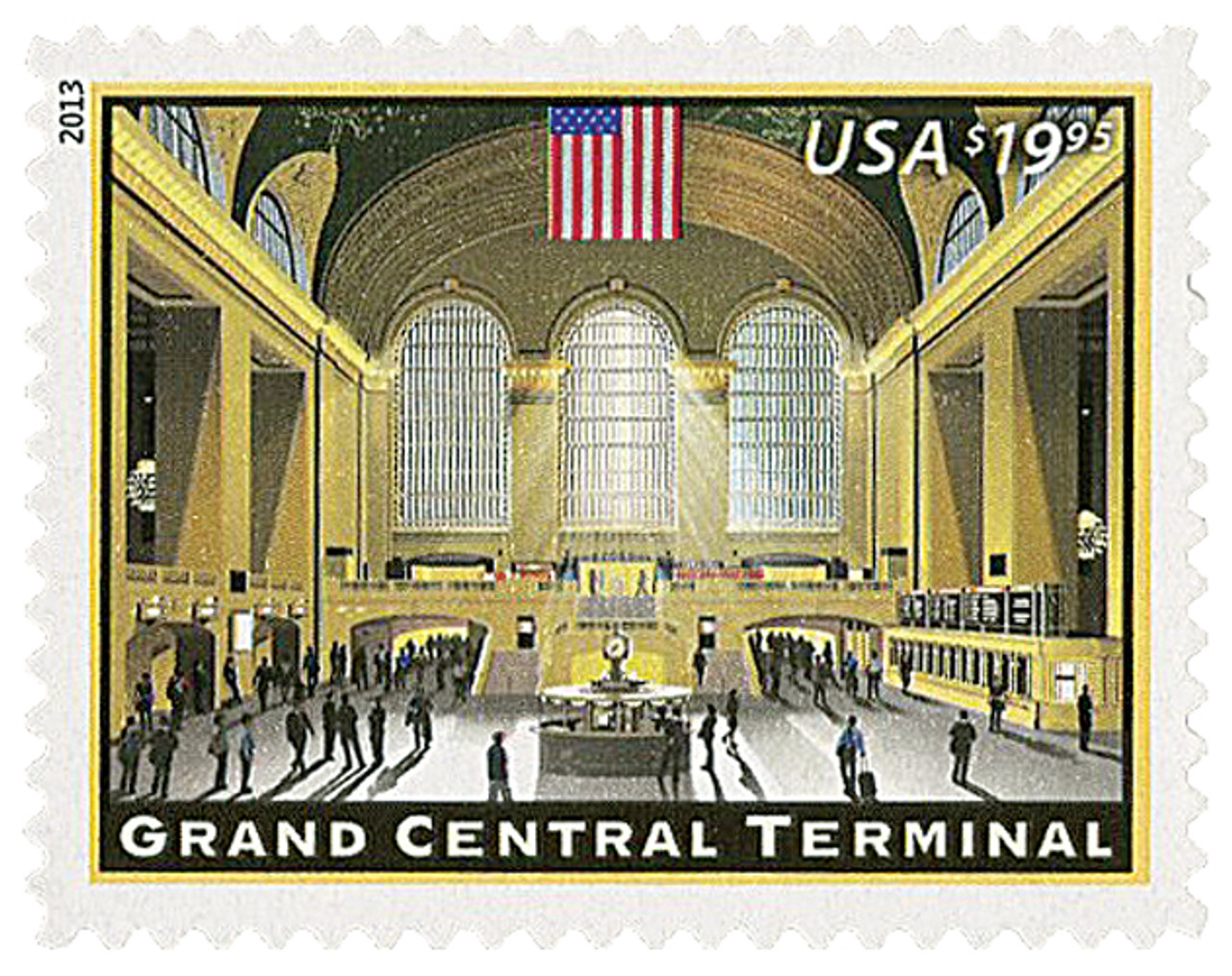
Express Mail
Express Mail
City: New York, NY
Quantity: 3,000,000
Printed By: Avery Dennison
Printing Method: Photogravure
Perforations: 10 ¾ X 10 ½
Color: multicolored
Issue Of America’s Most Artistic Stamp
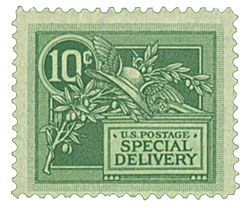
On December 12, 1908, the Post Office Department issued #E7, the 10¢ Helmet of Mercury Special Delivery stamp. Though unpopular at the time, many today consider it to be one of America’s most creative stamp designs.
Special Delivery service began on October 1, 1885, offering faster delivery for an extra cost. The original Special Delivery stamps were blue and larger than regular postage stamps so busy postal clerks could easily recognize them.
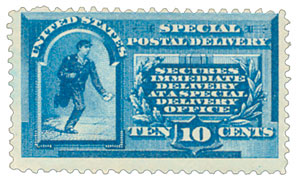
Over the years the design was tweaked, changing the wording and the design, from a running messenger to a bike messenger. Then in 1908, a drastically different design appeared. Whitney Warren, a famous New York City architect, designed #E7. His highly conceptual design incorporated a winged hat to symbolize speedy delivery. The symbol was borrowed from the ancient Roman god Mercury, messenger of the gods, the god of roads and travel, as well as the god of commerce, property, and wealth.
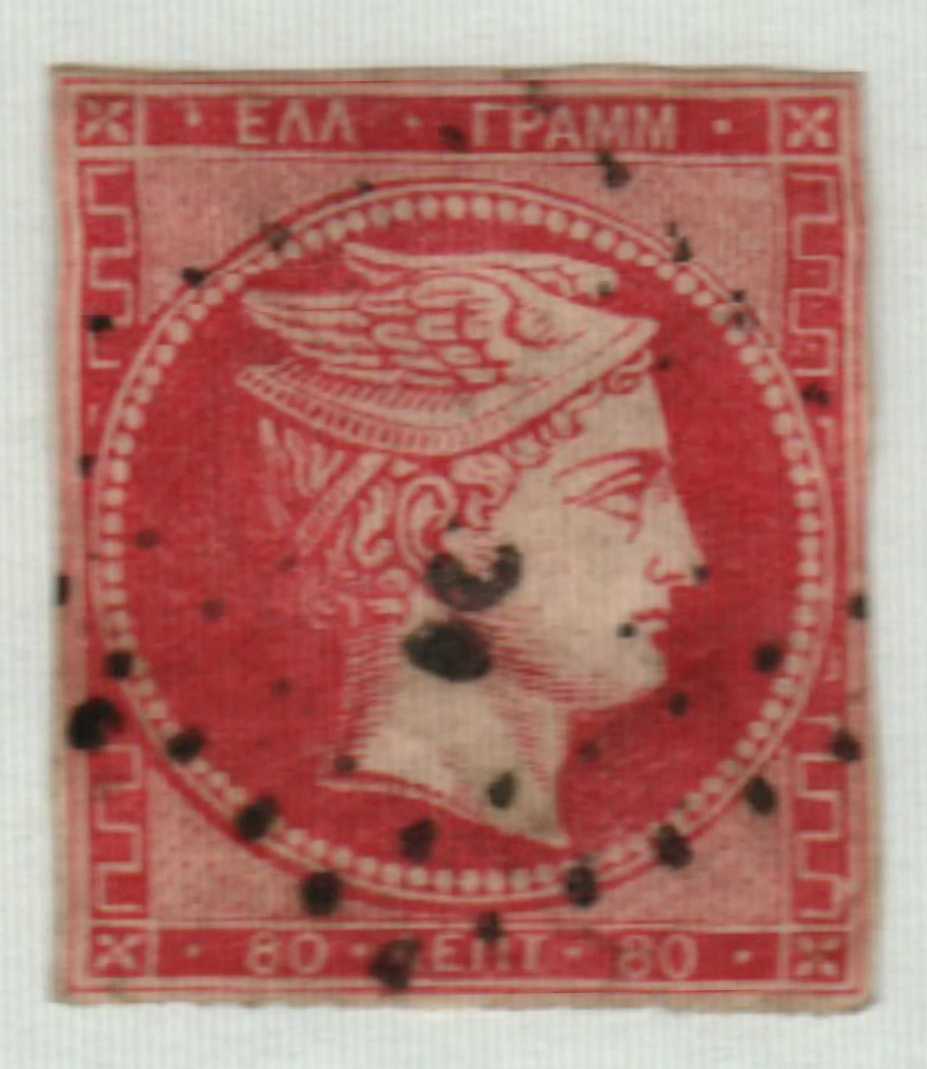
Mercury delivered messages wearing a winged hat and winged sandals, carrying a snake-entwined staff to protect him in his travels. Mortal messengers in ancient times wore hats similar to Mercury’s and carried staffs as identification guaranteeing freedom of passage. It was the perfect symbol for modern special delivery workers for whom speed was essential.
Unfortunately, the Helmet of Mercury stamp was disliked from the beginning: first by designers and engravers at the Bureau of Engraving & Printing, then by postal clerks, and finally by the American public. It’s believed the BEP disliked the E7 because an arrogant outsider created it. Whitney Warren had designed New York City landmarks: Grand Central Station, the New York Yacht Club, and the Biltmore, Roosevelt, and Commodore Hotels. But the BEP didn’t think that made him a good stamp designer. Warren irritated the touchy situation by refusing to accept the BEP’s design changes (which were actually rather minor). He hired a European to engrave his original design and sent it to Washington. Needless to say, there was considerable ill will as the E7 rolled off the presses December 12, 1908.
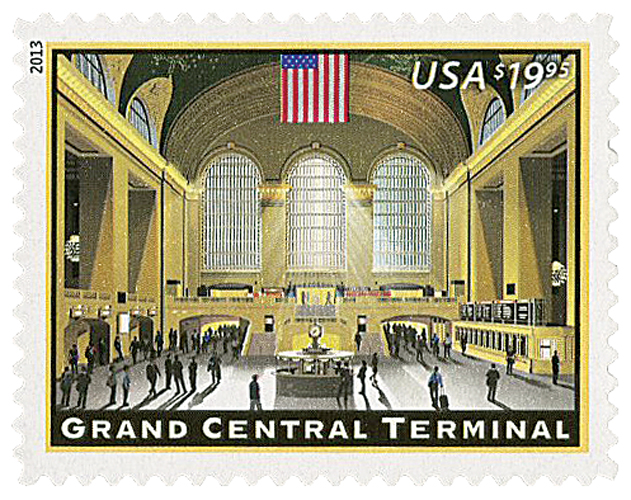
Records state the E7 was constantly mistaken for the 1907 Captain John Smith one-cent commemorative (Scott # 328). Such mistakes meant letters didn’t receive the special handling customers had paid for. Overnight, the stamp was sarcastically nicknamed “The Merry Widow,” after a Broadway play running at the time. Americans of the era were extremely practical – many felt the stamp’s design was frivolous. The demise of the Merry Widow was sealed with the retirement of Postmaster General Myer on March 6, 1909. His successor, Frank H. Hitchcock, discontinued the E7 June 9th, 1909. By popular demand, the ultramarine Messenger on Bicycle (E6) was reactivated. Interestingly, the E7 stamp was never demonetized and it remains valid postage to this day.
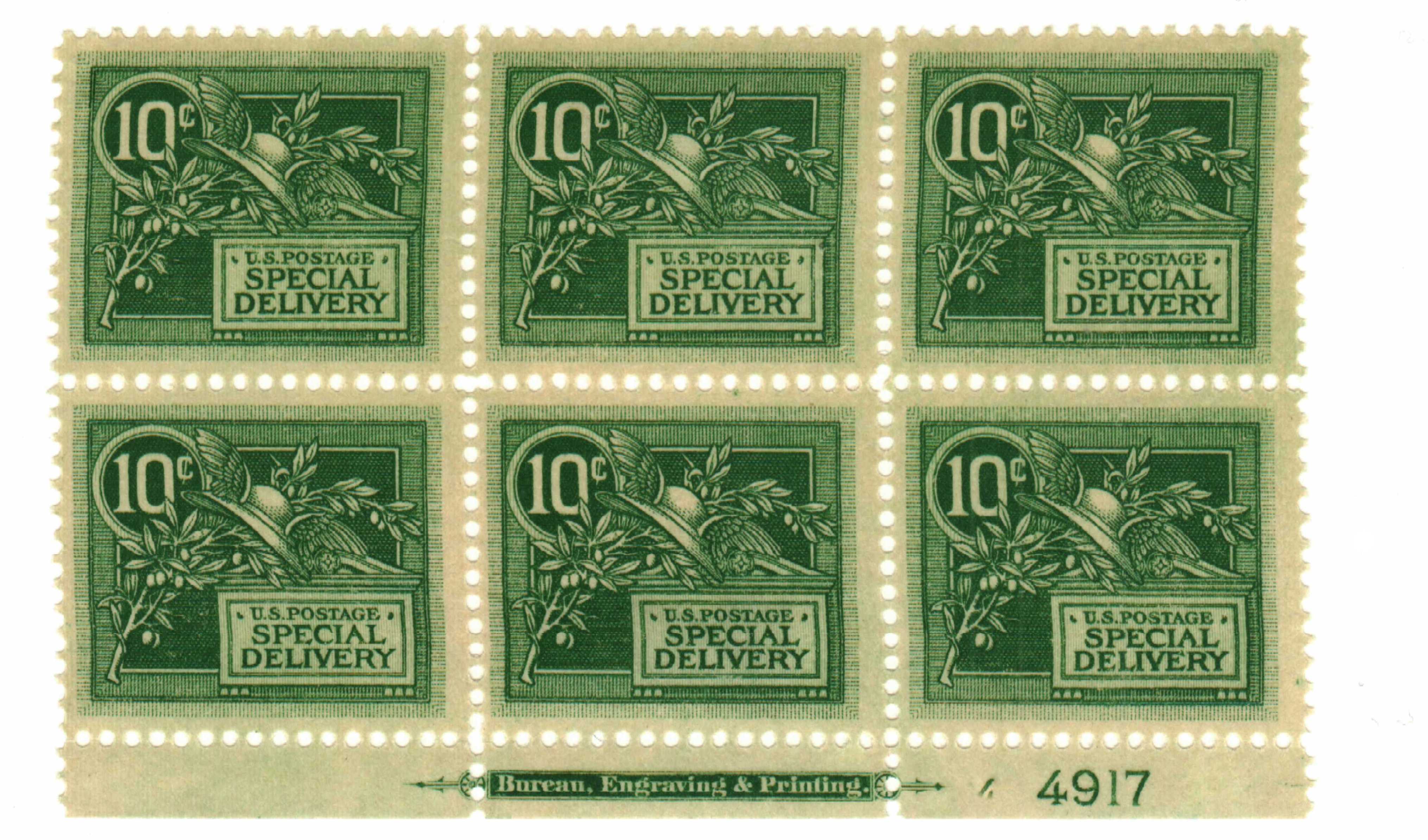
The Helmet of Mercury stamp is scarce today – it was on sale at U.S. post offices for only six short months! It is also scarce because fewer of these special delivery stamps were issued than regular stamps. In fact, the E7 had only one press run for a total issue of 3,876,551 stamps! Records state it was controversial and the most disliked stamp issued by the Post Office up to that date. Today however, the E7 is regarded as the most artistic stamp ever produced in the United States.
Click here for more about Mercury (Hermes) on worldwide stamps.

